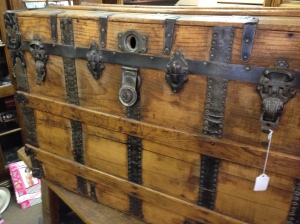I just watched What the Constitution Means to Me on Amazon Prime. This program which captures a largely one-woman Broadway show is an astonishing primer on the power of our governing document and what it means for all of us. I highly recommend it.
Watching it caused me to reflect on this conservative idea called Originalism, which is much favored by our newest Associate Justice, Amy Coney Barrett. It purports that the Constitution must be solely interpreted based on what the words meant at the time written to those who wrote it—you know the guys who thought women shouldn’t vote and that slavery was okay.
Maybe you’re wondering what that viewpoint possibly has to do with literary criticism. A lot, I think. What makes a piece of literature great? Is it what the author intended? Is it what the reader brings to it? Is it what the words meant to the author or what the words mean to the reader? Or, is it something that emerges in the creative process and stands apart, both from what the author intends or what the reader adds?
Here’s a question to help you think about that? How do you feel about the use of the n-word in Huckleberry Finn—an American novel considered a great piece of work by most.
Is it okay because that’s how people talked in 1885? Would it change your opinion if you know Mark Twain was a racist or not? If the word were bowdlerized to something softer in a modern printing, does that then destroy the book’s integrity? If Mark Twain were alive and wrote the book now, would he use different words? Does any of that matter to the impact of the book?
I think often about this very question. In my first novel, Tales from the Loon Town Café, there is a scene based on an actual 1980s fishing rights incident that occurred between a Native American tribe and some of my home town neighbors. In my fictional account, I include a slur screamed by one of the white demonstrators that builds off the “n word.”
When the actual incident occurred, The Milwaukee Journal covered it and the slur was included in the reporting. At the time, no one thought that odd. When I started working on the novel in ‘90s, I still didn’t worry about including the slur. By the time I prepared the manuscript for publication in 2012, I considered deleting it but kept the phrase to reflect the accuracy of its 1983 setting. But would I make that same choice today, some 8 years later? I don’t know. Maybe not.
So what is the true meaning of that scene, Mr. Originalist?
Let’s widen the picture. How do you judge the meaning of a book a century after it’s written? In one of my college classes, the assignment was to analyze a novel from multiple critical perspectives. I chose Alice’s Adventures in Wonderland. One approach I took was a Freudian critique. I found a lot to say.
To today’s reader, should it matter that multiple biographers of Lewis Carroll have questioned the author’s relationship with young girls and why he wrote the book? If it turned out the book is a byproduct of his pedophilic interests, does it become a bad book? If you consider that a theoretical question, just think about current arguments over the creative legacy of Michael Jackson and Bill Cosby.
For me, thinking as a creator, artistic value is ultimately determined outside of what the author intended. I intend a lot of great things that I am sure I never attain in my novels. But I also intend more mundane meanings that I know readers never realize. At the same time, they do find connections, implications and possibilities that never once consciously crossed my mind. When I hear them, I usually think “Cool, I can see that.” What is the real book? What I intended? What they see? And will it be the same a decade from now? Or two hundred and fifty years?
With art—whether it’s literature, music, sculpture or any other form—I think its importance and value is chameleonic and adaptable. It changes with the audience, the setting, and the time. That is what give art its true power and glory.
Ultimately, I think the same is true of most of human creation, including law and constitutions.
But here’s the great thing I learned from the play mentioned earlier: our Constitution built in that very quality of being a living document. Consider the 9th Amendment. Added to the Constitution on December 15, 1791 as part of the Bill of Rights, it says that all the rights not listed in the Constitution belong to the people, not the government. In other words, the rights of the people are not limited to just those rights listed in the Constitution.
Of course, the Originalists argue against this. They claim that at one point the drafting of the amendment had an additional clause that was removed. But somehow the fact it was explicitly removed and ended up not being part of the Constitution—and therefore should be ignored by their own way of thinking—seems to not matter in this case.
But that’s usually the way with people who claim something is the word of God or the word of the Founding Fathers or their principled vows four years ago. It’s only the true word if it still meets the interpretation that is useful to their goals at the moment.

Like the creator of What the Constitution Means to Me, I prefer to view the document as a living document that reflects the overall world we live in at the time we live in it—just like all great masterpieces.
Please check out all my novels in paperback or Kindle format, including: Tales from the Loon Town Cafe, The Finnish Girl, The Devil’s Analyst—and my latest, The Long Table Dinner.www.amazon.com/author/dennisfrahmann



